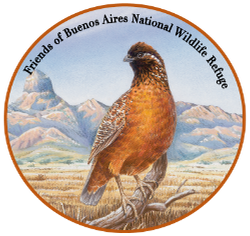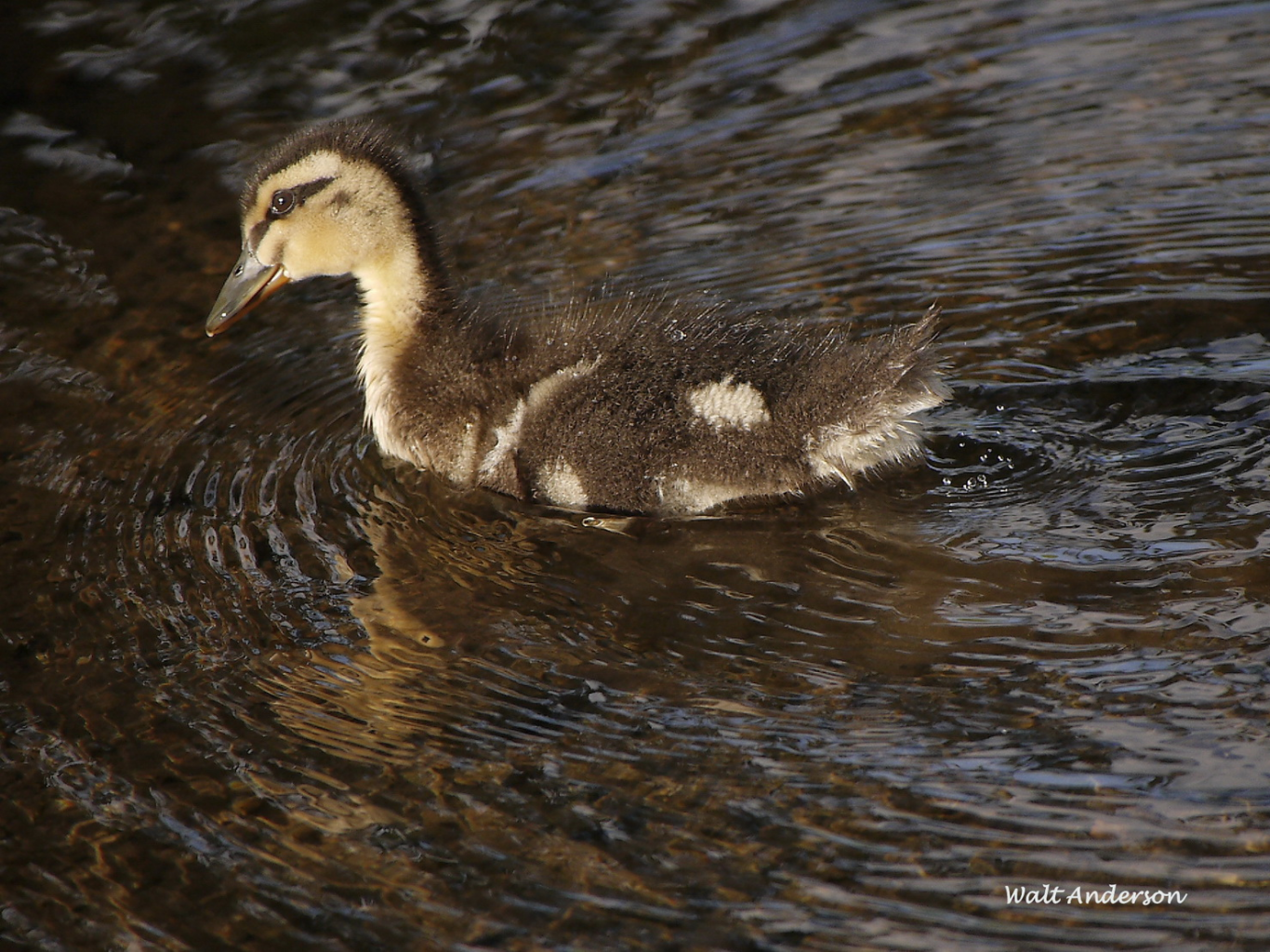
Precocity
by Walt Anderson
We are all familiar with the precocious nature of Wolfgang Amadeus Mozart, performing the violin beautifully at the age of three and composing pieces of his own at five. Precocity is the development of skills considered very advanced for a given age. It comes from the Latin for “early ripening.” While Mozart was a prodigy with exceptional early talents, humans in general are altricial, born helpless and needing a long period of parental care until able to function independently. Mozart was certainly no less helpless as a newborn, but his musical abilities developed at an extraordinarily early age, thus being considered precocial compared to others in his age-class.
Animals too are often classified as either altricial (naked, blind, and helpless at birth, like a kitten) or precocial (competent at moving and feeding upon their own shortly after birth or hatching). This is the time of year where we are seeing babies all around in nature, so today I want to look more closely at precocity in the more-than-human world.

Ducklings are classic examples of precocial young. They pop out of the nest and are off to the nearest water body often even before their down dries. Each species of duck has its own distinctive down pattern, so a waterfowl biologist (like I was in an earlier life) can identify a duckling even without seeing the mom. I was able to classify each duckling by its down (and eventually feather) pattern such that I could extrapolate back to the time of its hatching. Good management data.
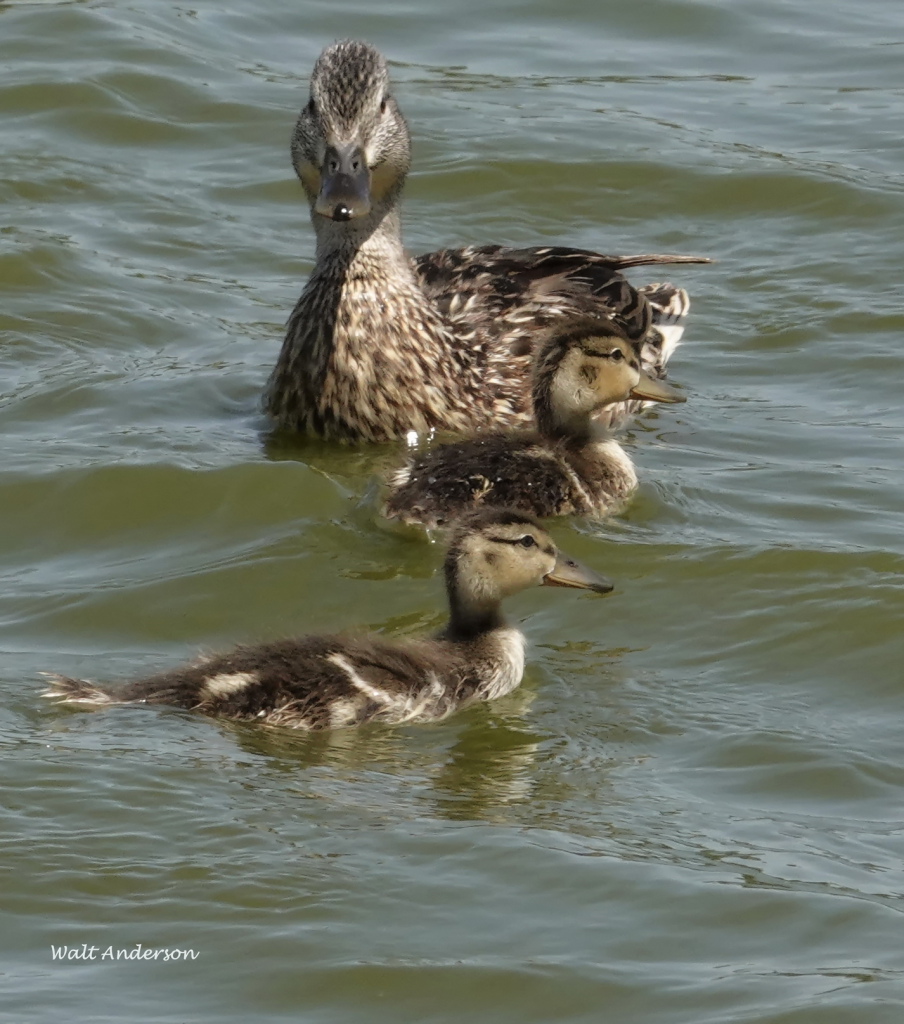
Those gaudy (naughty?) male Mallards hang around their mates until the hen is well into incubation, then depart to join other males in bachelor molting parties. The advantage of precocity is that the ducklings need very little parental care. The hen can guide them to potential food sources and provide warnings when predators appear, but the ducklings are surprisingly competent at being ducks right from the start.
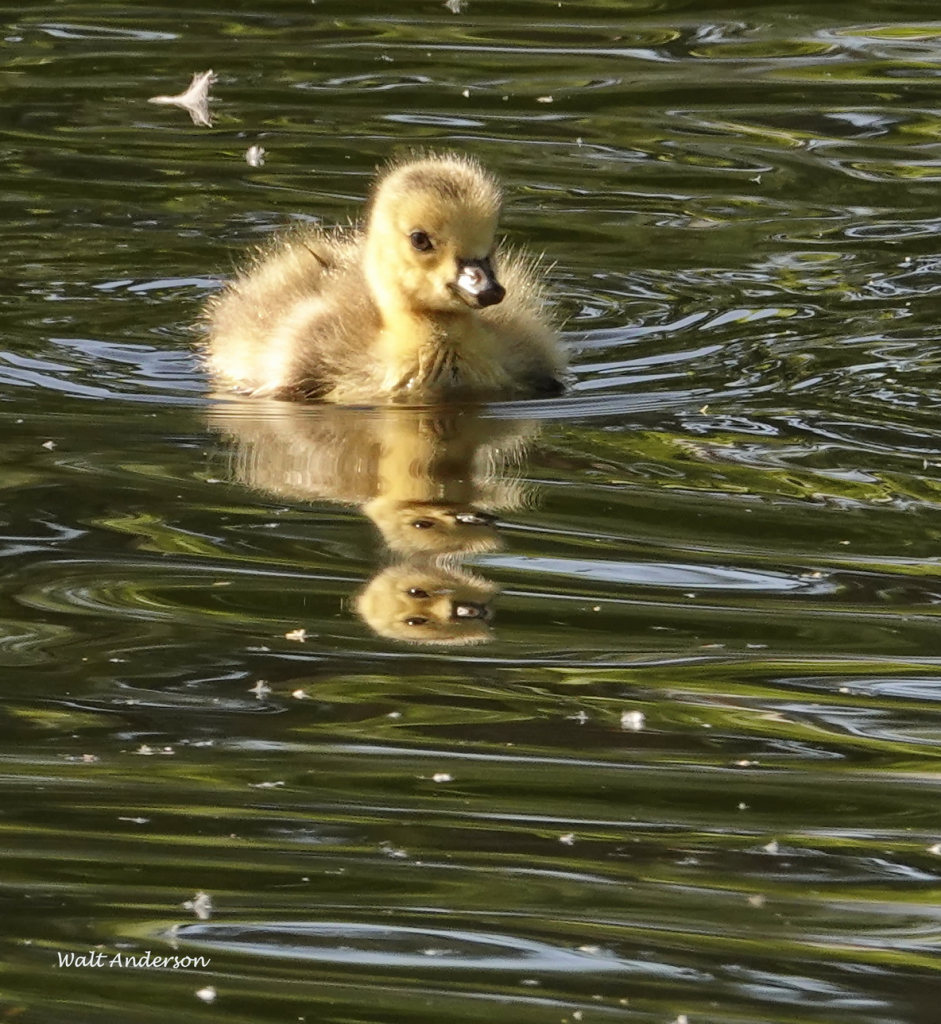
Here comes a precocial young one, but wait—it’s not a duck! A gosling Canada Goose is surely among the very cutest of the precocial baby crowd. Goslings usually imprint on their parents so that they behave like respectable geese when they mature. Occasionally they follow the wrong object, even a person, and if they imprint on that object, this totally messes them up psychologically, dooming them to seek the type of their imprinted “parent” as a desirable mate when they grow up. This gosling seems to be reflecting upon my potential as a parent. In fact, it seems to have two minds about it. I backed off and ducked any future responsibility.
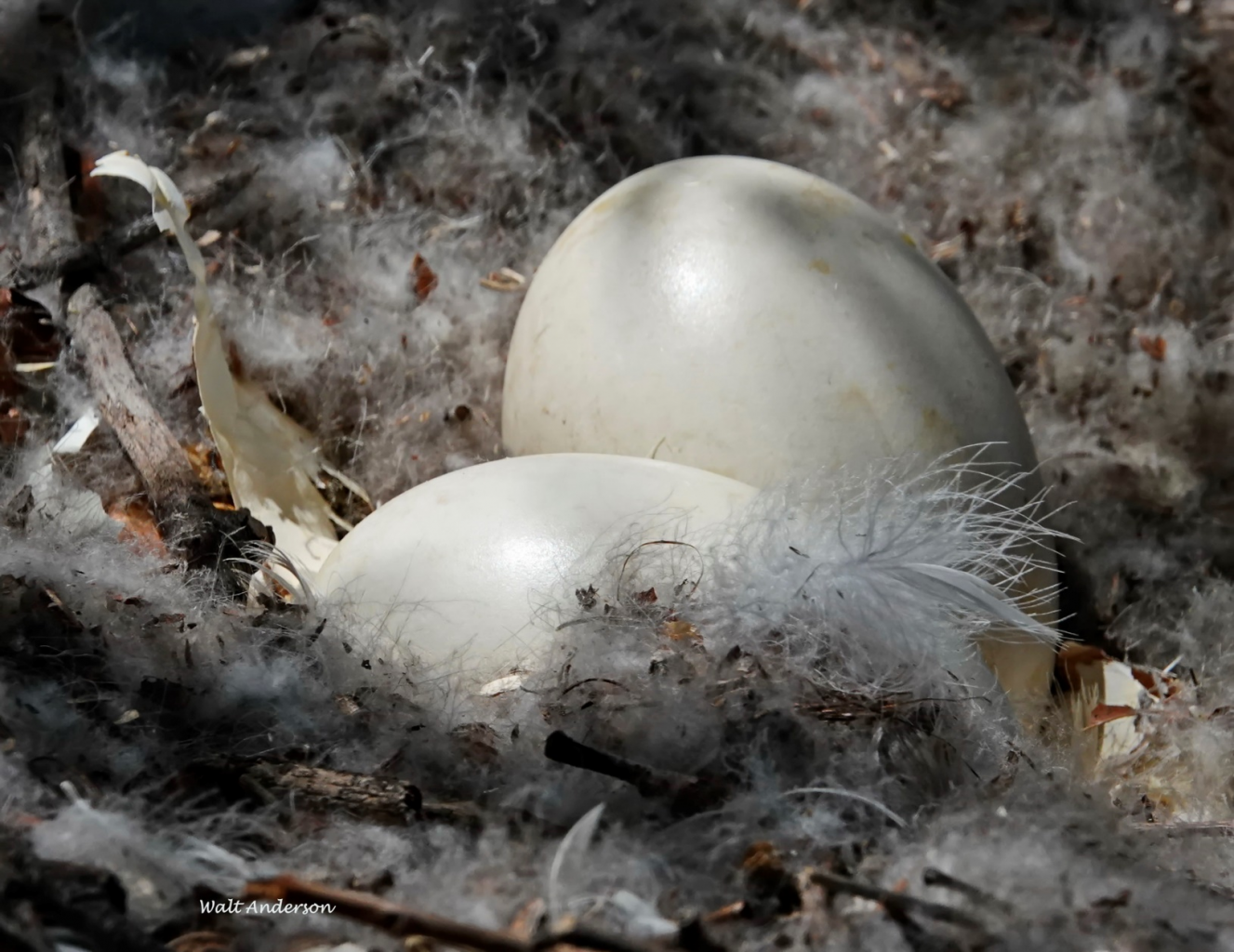
Precocial young spend relatively more time in the egg, which provisions them to a greater extent than do the eggs of altricial birds. Altricial birds have a period of nest-dependency, whereas precocial ones will leave the nest as soon as possible after hatching. In fact, studies have shown that many of them talk to each other through their eggshells and thus synchronize their hatching times so they can leave together. I found this goose nest at Willow Lake this spring. Two goslings had just hatched, and these two eggs would hatch within 24 hours. The mother’s down plucked from her breast made the nicest feather bed that you can imagine. Collecting goose down for pillows and down jackets was a big industry at one time. The demand for down was up until invention of synthetic fluff caused a market crash, sending plucky down-gatherers into the unemployment lines.
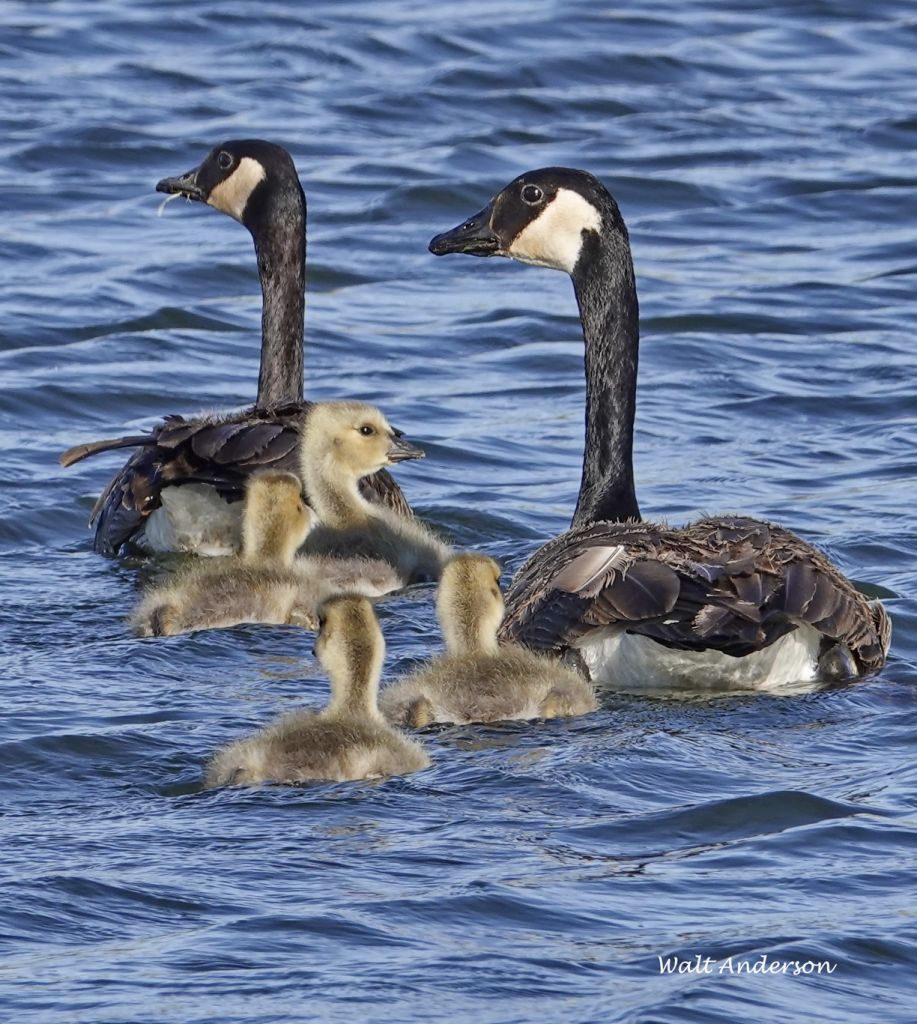
Unlike the ducks, where the showy males compete for mates and then leave parental care to the hens, geese form long-term pair bonds and together defend the brood. Some folks like to use the geese as examples of strong marriages and good biparental care, but we know that people don’t necessarily follow this model. Deadbeat dads duck out on their parental duties and go off to try to impress other vulnerable hens (I mean women).
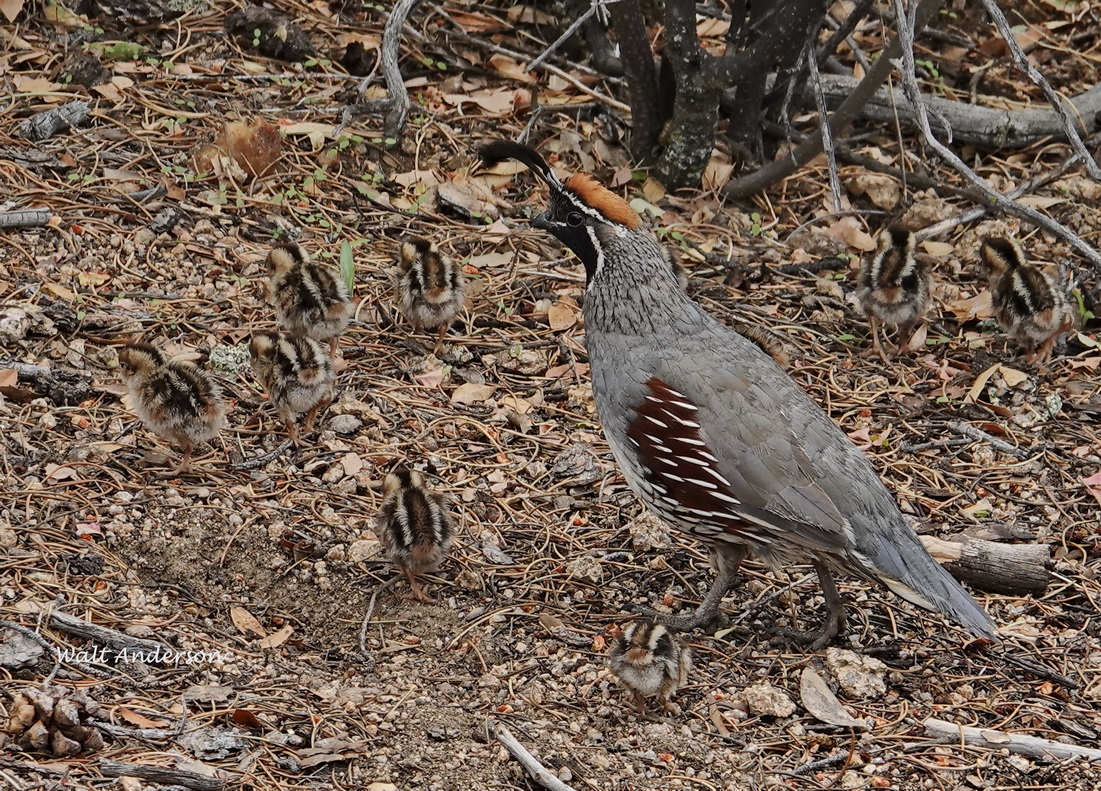
Quail are great examples of dutiful dads. The males are very protective of their mates and their broods. They often stand guard while the rest of the family eats, and even if the hen dies for some reason, the male is able to successfully raise the young; the chicks can feed themselves and just need some guidance, possible defense, and a warm body at night to cuddle under. Notice how the down pattern makes very effective camouflage on some substrates (though not on boring green lawns).

The chicks learn by imitating the parents. There must be some tasty seeds here.
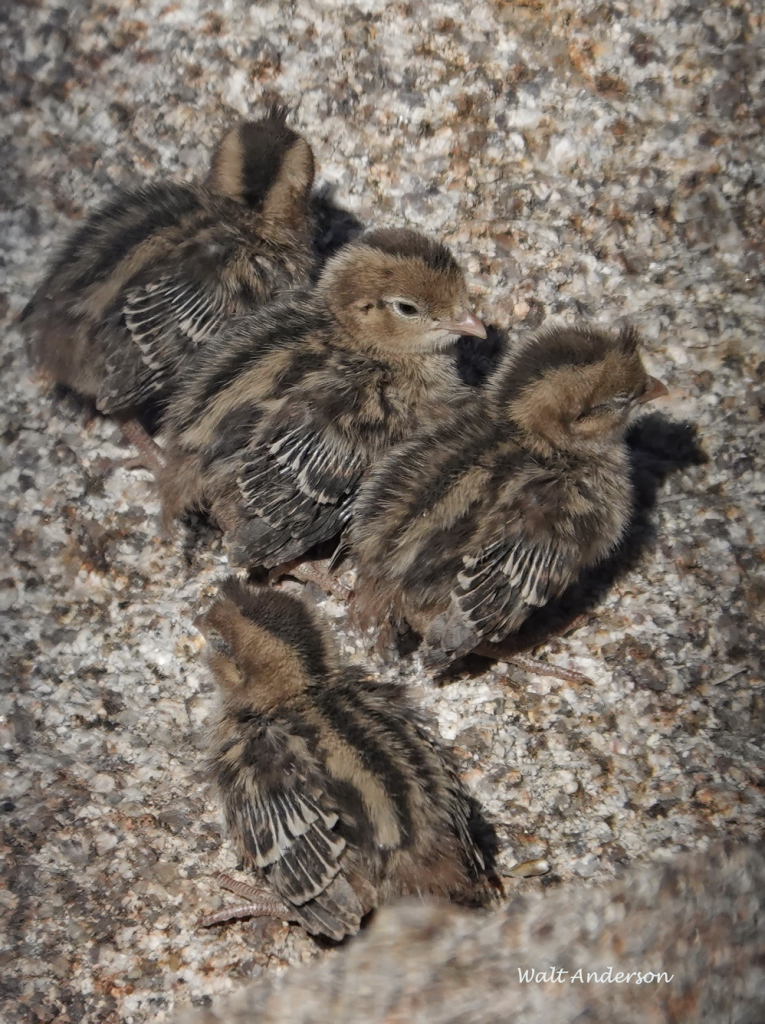
These chicks have stopped for a little rest, safe under the vigilant guarding of their parents. Baby quail develop their wing feathers fastest and can fly short distances even at this tender age. Oh, “tender” is one of those words that they, like chickens, hate to hear. Sorry.

The flight feathers of altricial birds, like this robin, take much longer to develop. Although this fledgling is out of the nest, perhaps a day or two too early, it will depend on its parents to bring it food until it finally becomes independent. At hatching, this baby was naked, weak, and frankly, not very pretty.
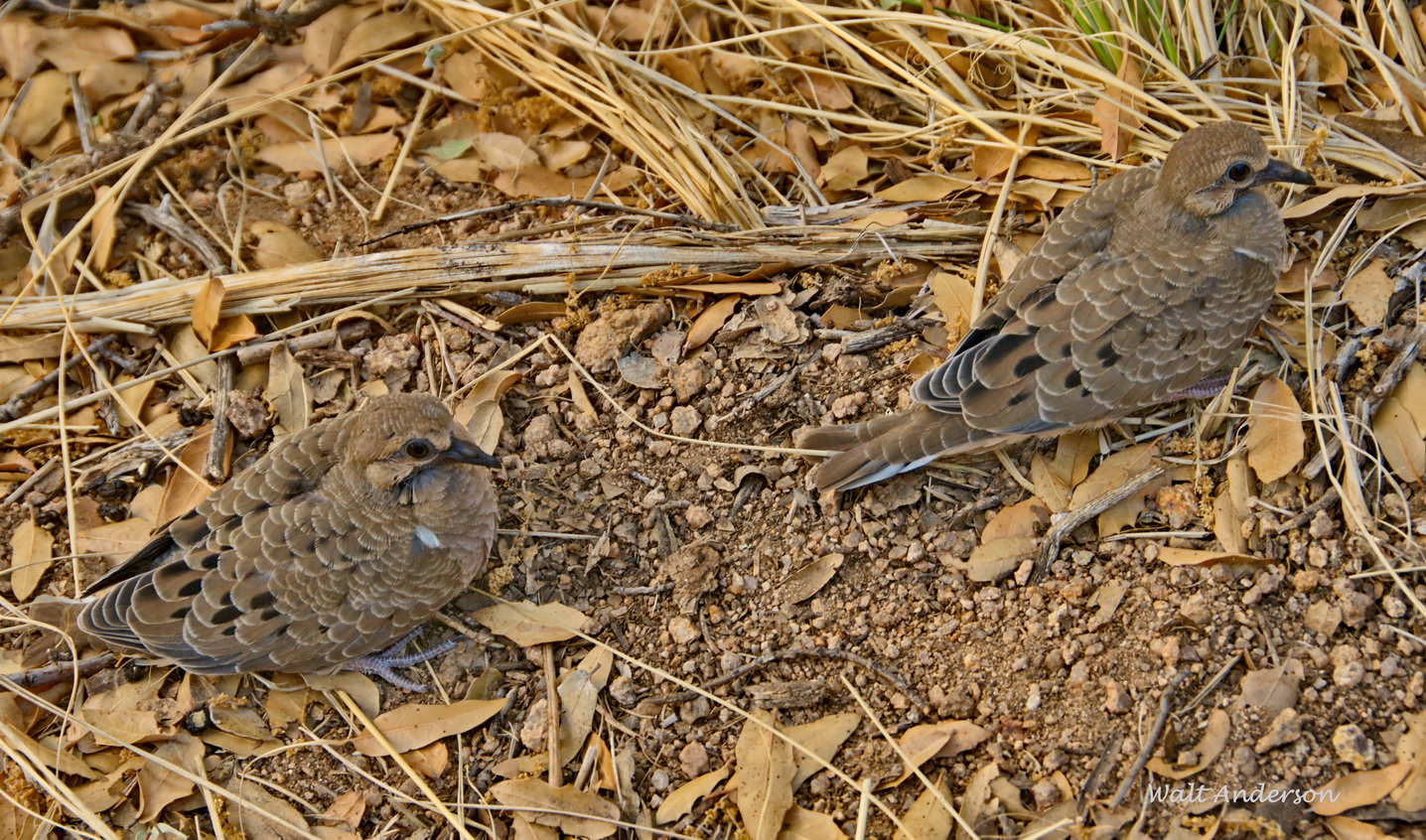
These young Mourning Dove fledglings can fly, but not very well. They haven’t attained full adult plumage yet and are quite vulnerable to Cooper’s Hawks, cats, and other predators.
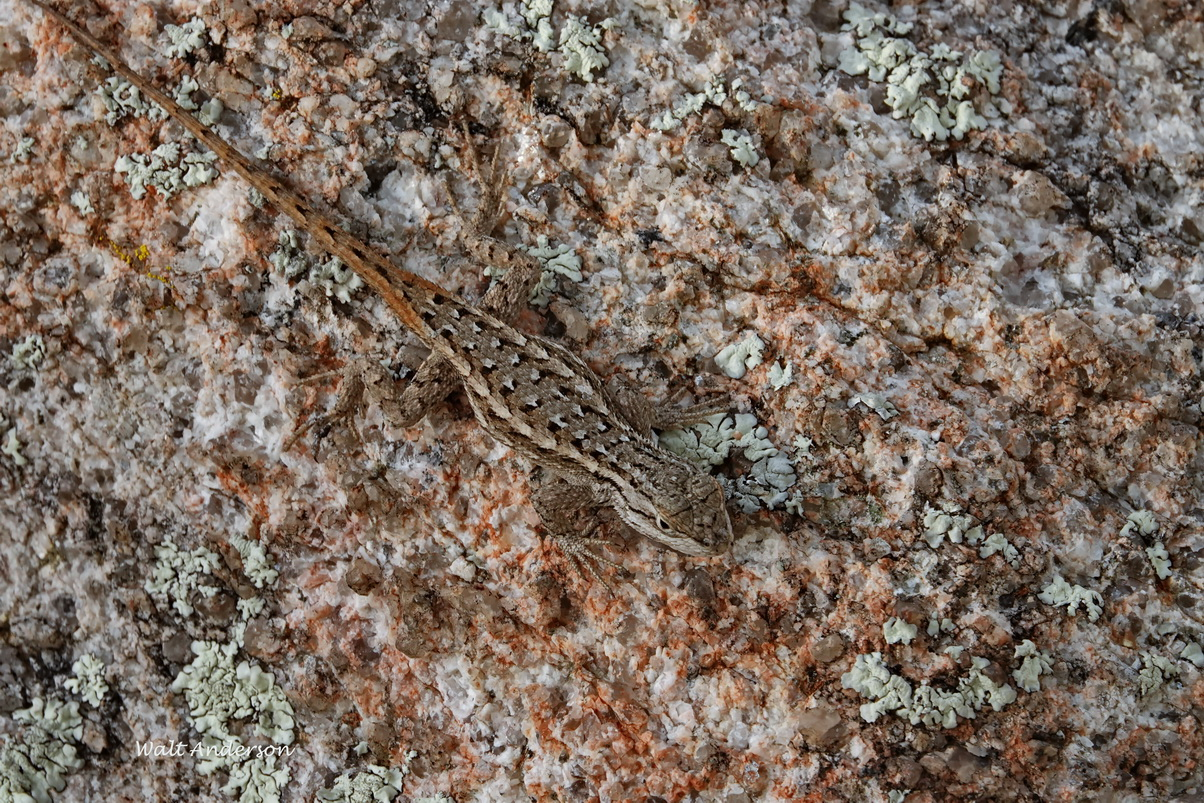
Most reptiles, like this young Plateau Lizard . . .

or this baby horned lizard are precocial as young. And unlike the precocial waterfowl and quail I mentioned, these babes need no parental care at all. They are just miniature adults left entirely to their own devices. Think about sea turtles, where the moms deposit eggs in sand on the beach and return to the sea. Eventually the turtlets hatch and run the gauntlet of predators until plunging into the waves, never knowing either parent.
Some reptiles (e.g., cobras, alligators, crocodiles) do exhibit parental behavior in guarding nests and/or babies, but the young ones can move and feed themselves from the start. Their diet often differs significantly from that of the parents, so in effect, many young herps occupy a different niche.

Young hoofed mammals often are precocial. Even though they depend on mother’s milk at first, they develop their running skills early. Zebra parents are fiercely protective of their young, though lions and hyenas do some natural culling. Compare this youngster with a baby lion or hyena, typically confined to a den area for quite some time and only slowly developing its predatory skills.
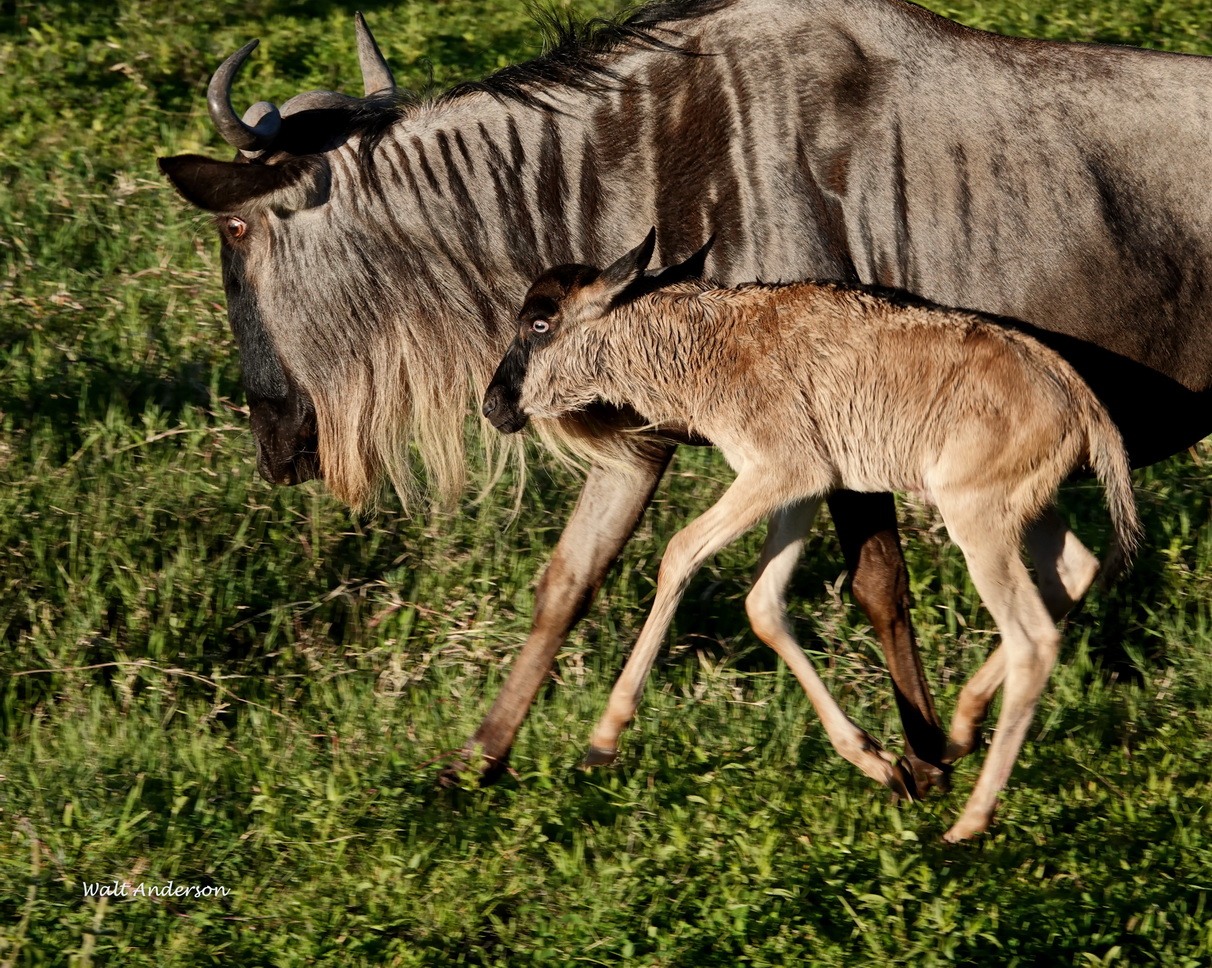
Perhaps the ultimate in mammalian precocity is demonstrated by the wildebeest. A calf can stand in a few minutes and can keep up with the herd in about a day. It is a big baby, born with its locomotory machinery ready to operate with little training. In fact, one trait of animals with precocial young is that they operate mainly with strong instincts. They don’t require a long period of learning to develop competence.

Primates, including humans (not pictured here) are altricial in being born with complete dependence upon the mother for extended time. There is a prolonged developmental period as the young primate matures. While this Blue Monkey will mature fairly quickly, young humans will have an incredibly long period of dependence and slow maturation. This is both our strength and perhaps our weakness. We have years to develop our adult skills, which can allow for amazing feats of learning and adaptability. On the other hand, we never fully grow up, and perhaps that’s why we have such ridiculous partisan squabbling and rancor. And having lots of time to learn does not mean that every individual will be freethinking and rational in decision-making. As a retired teacher and a parent, I worry about the state of modern education, where critical thinking is not encouraged in many families and institutions. So far, the jury is still out whether Homo sapiens (“wise human”) is correctly named or not.
